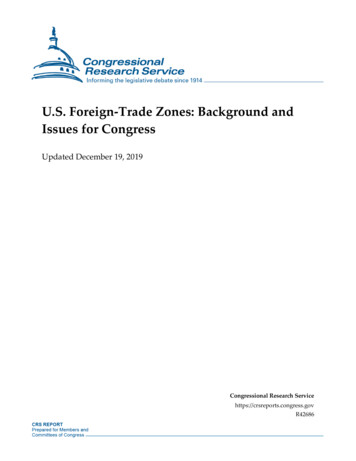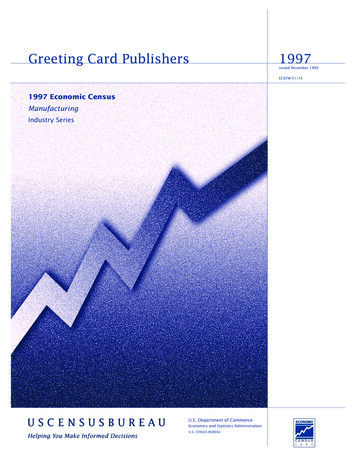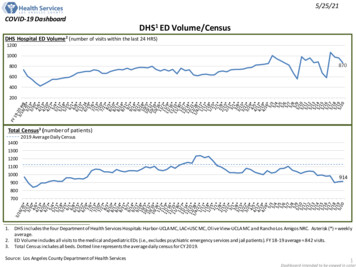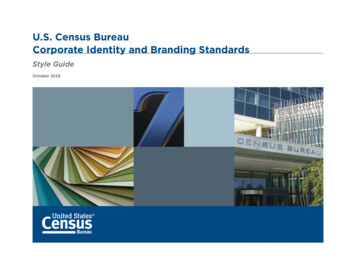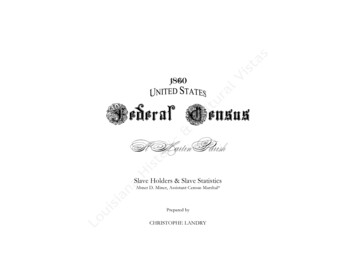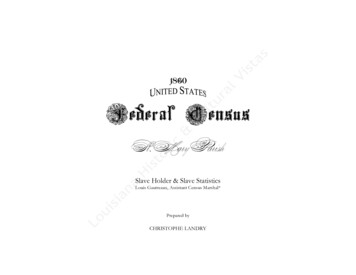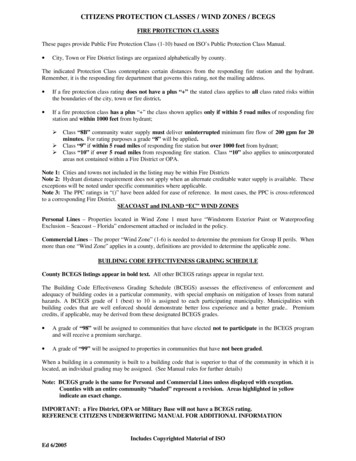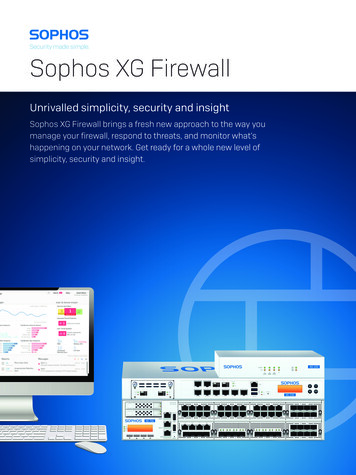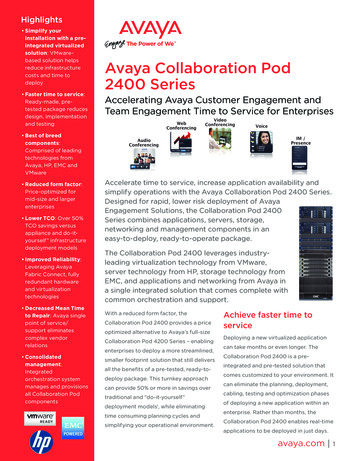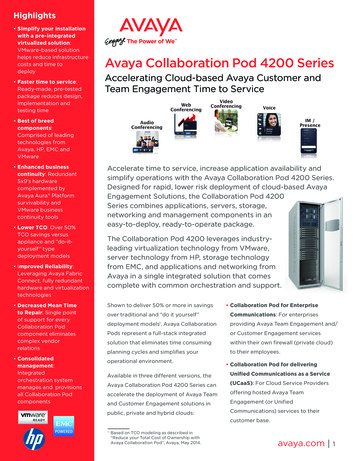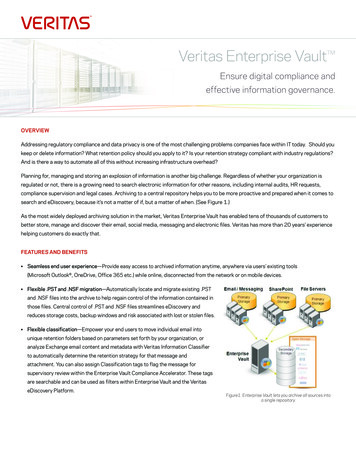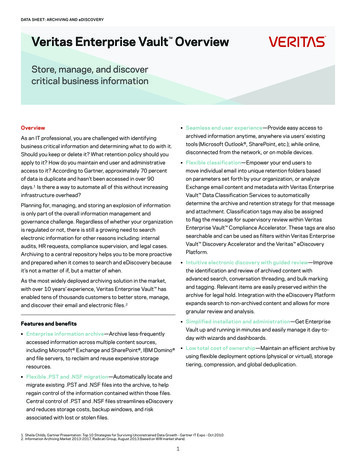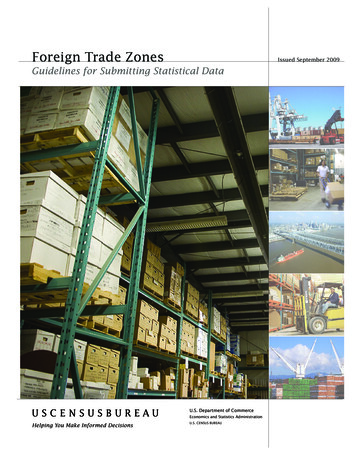
Transcription
Foreign Trade ZonesIssued September 2009Guidelines for Submitting Statistical DataU.S. Department of CommerceEconomics and Statistics AdministrationU.S. CENSUS BUREAU
Foreign Trade ZonesGuidelines for Submitting Statistical DataU.S. Department of CommerceGary Locke,SecretaryDennis F. Hightower,Deputy SecretaryEconomics and Statistics AdministrationRebecca M. Blank,Under Secretary for Economic AffairsU.S. CENSUS BUREAURobert M. Groves,DirectorIssued September 2009
SUGGESTED CITATIONCITATIONSUGGESTEDU.S.U.S. CensusCensus Bureau,Bureau,ForeignTradeZonesFederal Aidto StatesGuidelines for SubmittingStaticticalDatafor FiscalYear 2008,U.S.U.S.GovernmentGovernment PrintingPrinting 9ECONOMICSAND STATISTICSADMINISTRATIONEconomicsand StatisticsAdministrationRebecca M. Blank,Under Secretaryfor Economic AffairsU.S.U.S. CENSUSCENSUSBUREAUBUREAURobert M.M. Groves,Groves,RobertDirectorDirectorThomas L.L. Mesenbourg,Mesenbourg,ThomasDeputy DirectorDirectorandandDeputyChiefChief OperatingOperatingOfficerOfficerC. HarveyC.HarveyMonk,Monk,Jr.,Jr.,Associate msfor EconomicC. Harvey Monk, Jr.,WilliamG. Bostic, Jr.Acting AssistantDirectorAssistantDirectorfor EconomicforEconomicProgramsProgramsLisa M. Blumerman,WilliamG. Bostic, Jr.Chief, GovernmentsDivisionActingChief, ForeignTrade Division
CONTENTSOVERVIEW . 1CENSUS BUREAU COLLECTION AND COMPILATION OF FTZ DATA. 2CBP’s NEW FOREIGN TRADE ZONE ONLINE REPORTING PROGRAM. 3e214 Enrollment Information. 3e214 Software Edit Requirements. 5e214 Best Practices for the Census Bureau Extraction Process. 5e214 Corrections. 5CBP PAPER FORM 214. 6CBP Form 214A Statistical Data Elements. 7CBP Form 214A Corrections. 9AUTOMATED FOREIGN TRADE ZONE REPORTING PROGRAM.10FOREIGN TRADE ZONE CONSUMPTION ENTRIES.11CBP’s Electronic ABI Entry Summaries.11ABI Enrollment information.11ABI Software Recommendations .12CBP Form 7501 Consumption Entries.13CBP Form 7501 Data Element Requirements.13CBP Form 7501 Corrections.20Import Information Data Retention Period.20Imports Parameter Request for e214 and ABI.20FOREIGN TRADE ZONE EXPORTS.21OTHER RECOMMENDATIONS AND BEST PRACTICES.22Training For Foreign Trade Zones.22Training Manual.22Cross Training.22Mentor Program.22Seminars and Conference.23Foreign Trade Zones Reports.23Daily/Weekly Reports.23No Activity Reports.23Duplication.24ATTACHMENTS.25U.S. Census BureauForeign Trade Zones: Guidelines for Submitting Statistical Dataiii
OVERVIEWThe U.S. Census Bureau, Foreign Trade Division (FTD) is responsible for collecting, compiling, and publishing theU.S. International Trade Statistics for the United States. The legal authority for the collection and publication of U.Sforeign commerce and trade statistics is established under Title 13, Chapter 9; and Title 18, Section 1905 of the U.S.Code (USC), and by regulatory mandate in Title 15 Code of Federal Regulations (CFR), Part 30.The purpose of this document is to serve as a guide for fulfilling Foreign Trade Zone’s (FTZ) statistical reportingrequirements to the Census Bureau for FTZ admissions, FTZ consumption entries, and FTZ exports.FTZ admissions refer to the physical arrival of goods into a zone in a specified zone status with the appropriateapprovals of the zone grantee and Customs and Border Protection (CBP) agency. The word “admission” is usedinstead of ‘entry’ to avoid confusion with CBP entry processes under parts 141–144 of CBP regulations. Statisticalrequirements for zone admissions are provided to the Census Bureau via CBP’s Automated Broker Interface (ABI)new electronic 214 (e214) program, CBP Form 214A Application for Foreign-Trade Zone Admission and/or StatusDesignation, or by the Census Bureau’s Automated Foreign Trade Zone Reporting Program (AFTZRP). Note that theAFTZRP has expired and therefore is no longer a reporting option.Entries on goods imported for consumption, entering U.S. commerce immediately upon import or entering afterwithdrawal from a FTZ or from a bonded warehouse are filed with CBP in the form of an “entry summary forconsumption” with payment of estimated duties, taxes, and fees, if any, resulting in the release of the goods byCPB. Statistical requirements on entries for consumption are provided via the CBP’s ABI program or on a paper CBPForm 7501 document. The CBP’s ABI system is a module within the CBP’s Automated Commercial System (ACS); acomprehensive system used by the CBP to track, control, and process all commercial goods imported into theUnites States.FTZ exports refer to merchandise exiting a FTZ for shipment to other countries outside of the United States. Exportinformation for the Census Bureau purposes are collected via the Automated Export System (AES). These variousforms of import and export collections will be discussed throughout this document.This document is not intended to replace other U.S. federal agency reporting requirements for FTZs. It containsguidelines and best practices that will facilitate the reporting of quality and timely data to the Census Bureau.1Foreign Trade Zones: Guidelines for Submitting Statistical DataU.S. Census Bureau
CENSUS BUREAU COLLECTION AND COMPILATION OF FTZ DATAThe Census Bureau collects and compiles merchandise imports statistics from the FTZs based on informationreported via electronic and paper form sources. These data represent shipments through various ports of entryacross the United States, Puerto Rico, and the Virgin Islands.FTZ data are electronically submitted via the CBP Automated Broker Interface (ABI) system, or by paper CBP Form214A through CBP. CBP’s ABI (e214) system facilitates the timely and more accurate reporting of import zone data toCBP. The Census Bureau encourages FTZ operators/users or their brokers to use CBP’s automated system to reportstatistical data. The benefits of these programs are described in the following sections.Information reported on the application for FTZ admission and/or designation is very important in preparing tradestatistics on goods moving in FTZs. The information is required under 19 Code of Federal Regulations (CFR) 146.32(a)and gathered by the Census Bureau from the statistical copy of CBP Form 214A and the e214. Statistical reportingof FTZ information is required by the order of the Secretary of Commerce as mandated in Title 13 U. S. Code (USC),302. Provisions for the collection of FTZ data are contained in Title 15, Part 30, Foreign Trade Regulations (FTR),section 30.52. The responsibility for obtaining and providing the information rests with the applicant zone user foradmission to the zone.U.S. Census BureauForeign Trade Zones: Guidelines for Submitting Statistical Data2
CBP’s NEW FOREIGN TRADE ZONE ONLINE REPORTING PROGRAMThe Foreign Trade Zone (FTZ) Online (e214) application is a new web-based system that replaces filing of FTZ datavia the now expired Census Bureau’s Automated Foreign Trade Zone Reporting Program (AFTZRP). The CBP e214reduces the amount of document handling placed on CBP officers and FTZ operators. Although the AFTZRP allowedFTZs to report statistical data directly to the Census Bureau on merchandise being admitted into a FTZ, a hard copynonstatistical CBP Form 214 was also required to be submitted to CBP for processing. The e214 program combinesthe FTZ data submissions for the Census Bureau and CBP.This new program offers the following benefits to the trade: Provides a paperless transmission of FTZ data to CBP and the Census Bureau simultaneously which reducesthe reporting burden on the trade by eliminating dual agency reporting of zone admission data.Provides upfront edits to increase reporting accuracy.Provides timely transmission of FTZ data.CBP’s e214 data are electronically transmitted by the automated filer/broker through the Automated Broker Interface(ABI) system and are processed in much the same way as the ABI entry. If an e214 admission fails the system edits,CBP Officer will not see it until the discrepancies are resolved. The filer/broker must delete, correct, and retransmitthe e214 admission record for acceptance. Once the automated e214 admission is accepted by ABI, the admissionresides in the e214 database. The Census Bureau cannot extract the data from the ABI system until all errors havebeen corrected and properly submitted in the e214 database. Therefore, when reporting data via the e214 program,it is very important to ensure that all errors are corrected in a timely matter and that all admissions are “concurred.”The Census Bureau is no longer accepting applications for participation in the AFTZRP. Therefore, the only methodfor submitting electronic CBP Form 214A data to the Census Bureau is via CBP’s e214. The AFTZRP expired on March31, 2009. We strongly encourage the participants of the AFTZRP in addition to all paper CBP Form 214A filers toconsider using CBP’s e214 application to submit their FTZ data.e214 Enrollment InformationInformation regarding the enrollment process for non-ABI participants, current ABI participants, and software vendors can be found on the following CBP Web site: http://www.cbp.gov/xp/cgov/trade/cargo security/cargo control/ftz/214enrollment.xml .If you are currently an ABI participant, you must contact your assigned client representative. For non-ABIparticipants, begin by submitting a Letter of Intent (LOI) to the following address:Client Representative BranchU.S. Customs and Border ProtectionAttn: Beauregard, A-314-17681 Boston BoulevardSpringfield, VA 22153Fax: 703-650-35383Foreign Trade Zones: Guidelines for Submitting Statistical DataU.S. Census Bureau
The LOI must have the following information: Name, address, and phone number of your company. Type of business (i.e., zone operator, user, broker). Name and phone number of point of contact. Are you a software vendor or provider—how will data be transmitted? If you do not have a filer code, please request one in your LOI. The filer code is used toengage in CBP business.Upon receipt of the LOI, a CBP Client Representative will be assigned to work with your company and serve as atechnical advisor.Software vendors interested in developing software must include the following information in their LOI: A brief description of the company’s current or planned hardware, data communications system, entryprocessing system, and the expected completion date of the programming. If the company has offices in more than one location that may be communicating through ABI, include a listof all company offices and their exact locations. The name and the telephone numbers of the company’s principal management contact, technicalcontacts for CBP operations, applications program development personnel, and computer datacommunications personnel. If you do not have a filer code assigned to your company, include a statement requesting issuance of afiler code for purposes of filing e214 data. If you have a filer code, you will not need a separate filer code for filing the e214 data.If you need additional information regarding the ABI/e214 enrollment process, please call CBP at 703-650-3500. TheFTZ’s e214 record layout and instructions for submitting data via the e214 can be found in the Customs and TradeAutomated Interface Requirements (CATAIR) at ed systems/abi/catair/user requirements.xml .If you are an importer/broker or FTZ user who is interested in reporting electronically via the e214 program, locatethe list of field offices on the CBP Web site that are currently accepting the e214 filing. If the Port Officers in yourarea indicate they have not been trained on e214 filing, contact your local Port Director or CBP Headquarters at202-572-8835. You can also contact the Data Collection Coordination Branch at 301-763-2559 for assistance. Whencontacting CBP Headquarters, provide the CBP Port Director’s name, port location, and port code if available (i.e.,Portland, Maine, code 0101). The Headquarters office will work wit
1 Foreign Trade Zones: Guidelines for Submitting Statistical Data U.S. Census Bureau OVERVIEW The U.S. Census Bureau, Foreign Trade Division (FTD) is responsible for collecting, compiling, and publishing the U.S. International Trade Statistics for the United States.
